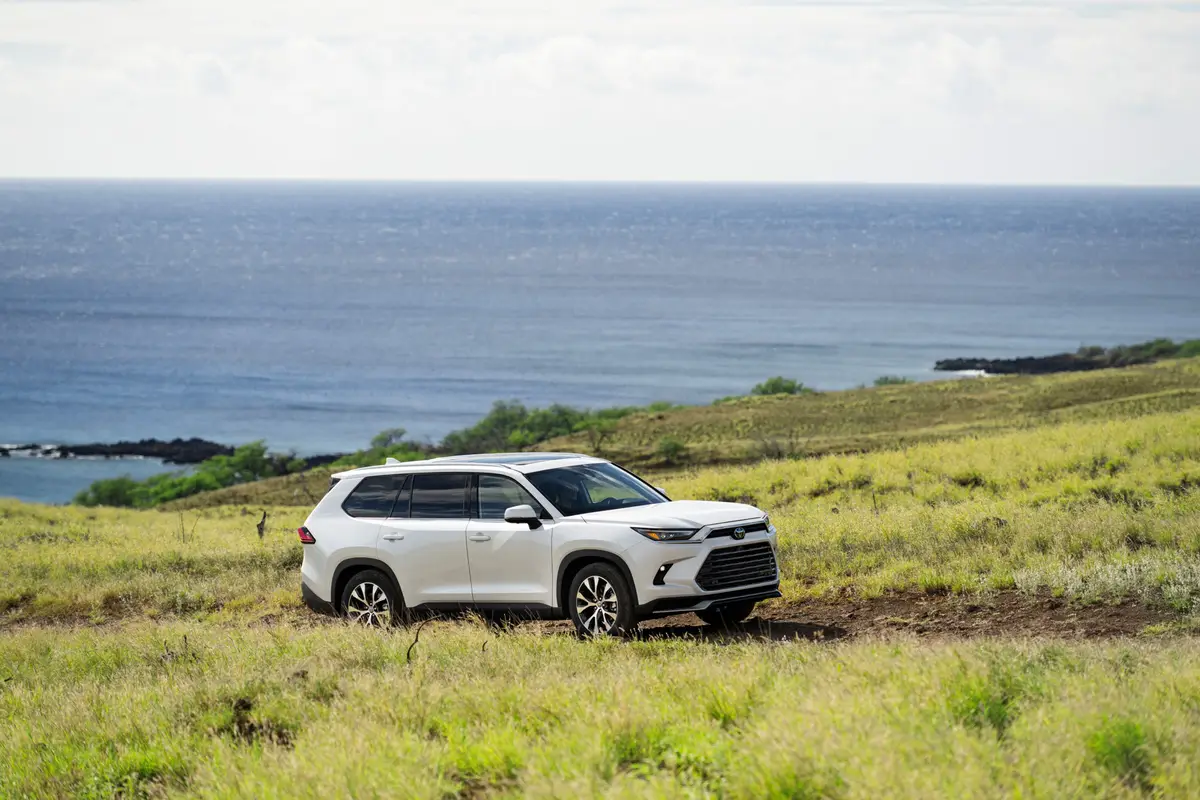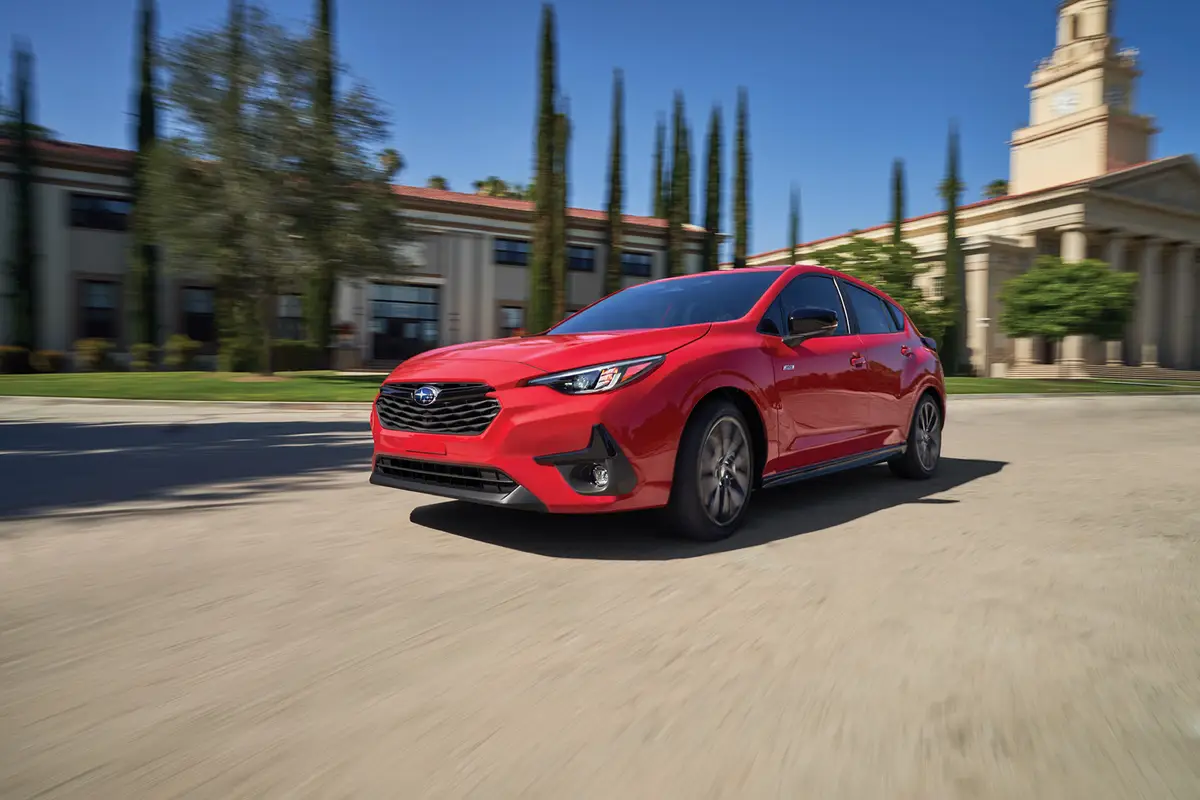Boston.com's view
After a week in Italy, one returns with a new respect for small cars, turbochargers, and the country’s drivers.
Italians tow, lug, travel, and commute in a wide variety of tiny (by US standards) vehicles, crammed far fuller than most Americans’ cars ever get loaded.
Our Italian travels took us on a holiday weekend along the eastern shore of Lago Garda, the German-speaking mountain section of Northern Italy, about three hours northeast of Milan.
We were driving in the (extended) family’s four-seat 1993 Fiat Punto turbodiesel, loaded with mountain bikes on the roof and crammed everywhere else with luggage, spare clothes, and tools in the cargo bay.
Watching the passing parade of vehicles, I had to think that the 2002 Audi A4 Quattro (all-wheel drive) we’d had for the five days before we left would have been right at home on either side of the Atlantic, cruising the Autostrada or interstates.
This particular A4 came with the 1.8-liter turbocharged 4-cylinder engine mated to the 5-speed manual transmission. It reminded me of the common question a supposed-to-know-something-about-cars person gets. To wit: ”Should I buy the 4-cylinder model or pay more for the 6?”
In general, my answer was, ”The 6,” based on the need for merging and passing punch, carrying capacity, and easier highway cruising. But there’s always been a nagging feeling that that wasn’t the right answer.
My 1994 Honda Accord EX, with its 4-cylinder VTEC engine, always made me wonder why (except for marketing purposes) the Honda poobahs felt the need to make an Accord V6.
And, after writing glowingly in this space about the V6 Passat, one astute reader wrote an equally passionate e-mail saying the V6 was a waste of money, that the 1.8T 4-cylinder was more economical and felt better in the driving experience.
I never confirmed that personally until this Audi with that same basic engine. The Audi also is available with a wonderful 3.0-liter six. But it says here you don’t need it.
One thing that happens with cars, and especially German vehicles, is that once you start adding options, the price tag rises the way you wish your 401(k) would. But for less than you’d pay for a gussied-up V6 Passat (near $30,000), you can get the basic A4 ($26,000 or so).
Usually, the bottom line of an auto review comes at the end. But this one arrived after a half-day of driving.
The driver (me) turned to the passengers and said, ”I could live comfortably with this car for a lot of years.” It goes on my short list of sedans for which I would trade my own (bought and paid-for) 1997 V-6, 5-speed Camry.
Audi, naturally, is pushing the higher-priced 3.0-liter V6 with pages of glowing description, dismissing the 1.8T as ”well known from the previous generation, although it has undergone detail modifications for use in the new car.”
Well, they sent us the 1.8, with its exhaust gas-powered turbocharger, and it was sensational. We g ot nearly 28 miles per gallon on a trip and averaged 25.3 mpg overall in roughly 400 miles on a new engine. With four people aboard, it felt as though the car would run effortlessly for weeks, stopping only for gas.
All it took was to keep the engine revs up just a bit so it wouldn’t lug on shifts with the smooth 5-speed.
But enough of engines, especially this well-proven gem. This is a car redesigned for the first time since 1995. Audi says the body is 45 percent stiffer. We’ll take their word for it. It’s not quite BMW 3-series stiff, but you can drive by the seat of your pants, knowing the gas shocks and redesigned rear independent suspension are reporting accurately in without jarring.
My experience is that Japanese cars are built for those who want to drive lots of trouble-free miles without worrying about feeling the road, while German cars are designed for drivers who want to feel the road, with stiffer suspensions, while driving those same miles. The A4 di nothing to change that perception.
The leather interior in this A4 got rave reviews from all four passengers, especially for the front [and rear] heated seats. There wasn’t a lot of extra glass area, but visibility was good except for the limited area covered by the driver’s side outside mirror.
On the road, setting the speed control presented a problem we’ve encountered in other German cars. Sometimes you’d reach for the speed control in the dark but hit the high-beam stalk instead. That’s embarrassing, especially when the drivers in front wonder what you’re up to.
Audi did something we particularly liked with the seats. They weren’t power, but were infinitely adjustable. You moved the driver’s seat back and forth manually. You adjusted the lumbar support with a dial. And there’s a ratchet lever to raise and lower your bottom to the desired height. It sounds complex but really was easier than dealing with many power seats we’ve tried. And, if you’re a one-driver car, you generally only make minor moves to adjust for fatigue on a trip.
There’s lots more to talk about, too:
Brakes: ABS, EBD (electronic braking distribution), and ESP (electronic stability program). In short, the binders were great.
Rear-seat legroom: Adequate for two good-size adults. Three would be a crush.
Trunk room: Great. With two cargo nets, one for big items and a side cubby that neatly anchored a camera bag. Luggage for a weekend trip for four? No problem.
Sound system: 150 watts of Bose with a six-CD in-dash changer. State of the art.
A bit of useless information: The top speed is electronically limited at 130 mph. Sorry, but we were neither able nor inclined to check that one.
All-wheel drive: Now that most makers offer it, equal advances in traction control make it something you can probably do without. This Quattro, unlike some individual cars we’ve tried, showed no signs of being a power-robber.
This is indeed a car you’d love to drive in Italy … or from Islip to Ipswich all year long.
2002 Audi A4 Quattro 1.8T
Base price: $26,650
As tested: $30,200
Horsepower: 170
Torque: 166 lb-ft.
Wheelbase: 104.3 inches
Overall length: 179.0 inches
Width: 69.5 inches (w/mirrors)
Height: 56.2 inches
Curb weight: 3,406 lbs.
Seating: 5 passengers
Fuel economy: 25.3 mpg
Source: Audi; fuel economy from Globe testing.
Nice touches
The dual exhaust. It sounds neat and is set off nicely by a flat black strip around the base of the car.
The sunroof control. Pull on the little hook, and the vent feature activates.
Annoyances
The adjustable steering wheel should move higher; otherwise even semi-tall drivers can get a full view of the instrument panel.
The trunk lid. It’s small and there’s limited mechanical advantage for closing it. Short folks have to be strong.
Latest news



